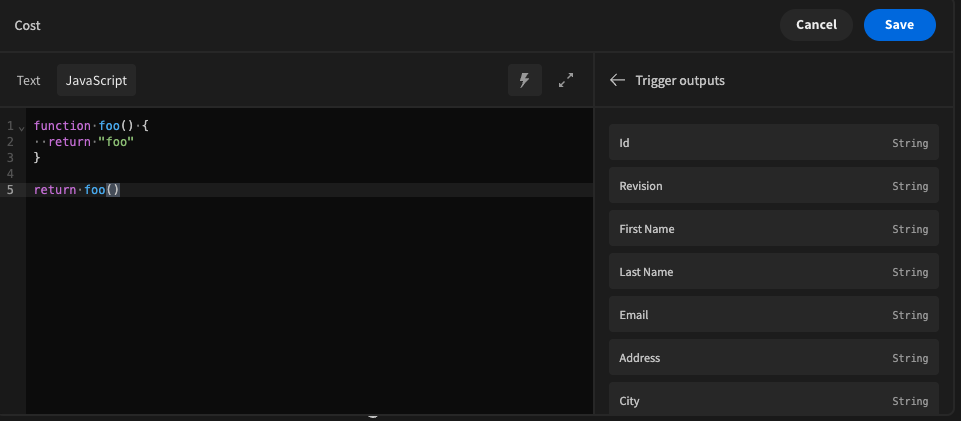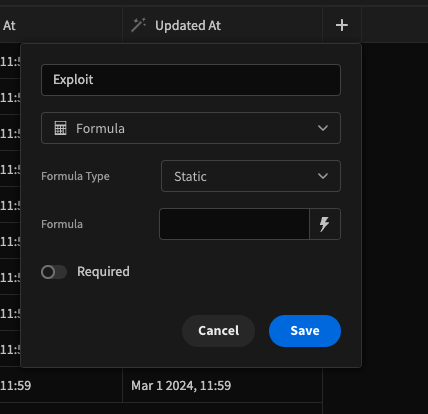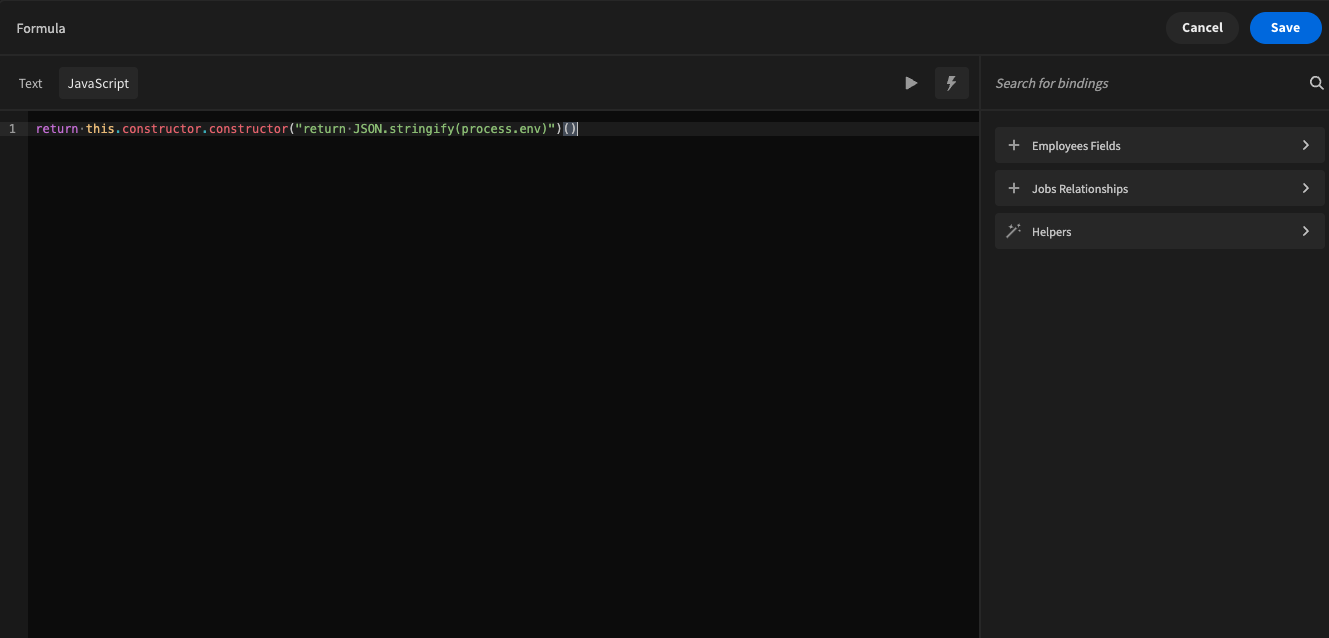Impact
Previously, budibase used a library called vm2 for code execution inside the Budibase builder and apps, such as the UI below for configuring bindings in the design section.

Due to a vulnerability in vm2, any environment that executed the code server side (automations and column formulas) was susceptible to this vulnerability, allowing users to escape the sandbox provided by vm2, and to expose server side variables such as process.env. It's recommended by the authors of vm2 themselves that you should move to another solution for remote JS execution due to this vulnerability.
Patches
We moved our entire JS sandbox infrastructure over to isolated-vm, a much more secure and recommended library for remote code execution in 2.20.0. This also comes with a performance benefit in the way we cache and execute your JS server side. The budibase cloud platform has been patched already and is not running vm2, but self host users will need to manage the updates by themselves.
If you are a self hosted user, you can take the following steps to reproduce the exploit and to verify if your installation is currently affected.
Create a new formula column on one of your tables in the data section with the following configuration.

Add the following JS function to the formula and save.

If your installation is vulnerable, when the formula evaluates you will be able to see the printed process.env in your new formula field. If not, your installation is not affected.
Workarounds
There is no workaround at this time for any budibase app that uses JS. You must fully migrate post version 2.20.0 to patch the vulnerability.
References
References
Impact
Previously, budibase used a library called
vm2for code execution inside the Budibase builder and apps, such as the UI below for configuring bindings in the design section.Due to a vulnerability in vm2, any environment that executed the code server side (automations and column formulas) was susceptible to this vulnerability, allowing users to escape the sandbox provided by
vm2, and to expose server side variables such asprocess.env. It's recommended by the authors ofvm2themselves that you should move to another solution for remote JS execution due to this vulnerability.Patches
We moved our entire JS sandbox infrastructure over to
isolated-vm, a much more secure and recommended library for remote code execution in 2.20.0. This also comes with a performance benefit in the way we cache and execute your JS server side. The budibase cloud platform has been patched already and is not runningvm2, but self host users will need to manage the updates by themselves.If you are a self hosted user, you can take the following steps to reproduce the exploit and to verify if your installation is currently affected.
Create a new formula column on one of your tables in the data section with the following configuration.

Add the following JS function to the formula and save.

If your installation is vulnerable, when the formula evaluates you will be able to see the printed
process.envin your new formula field. If not, your installation is not affected.Workarounds
There is no workaround at this time for any budibase app that uses JS. You must fully migrate post version 2.20.0 to patch the vulnerability.
References
References